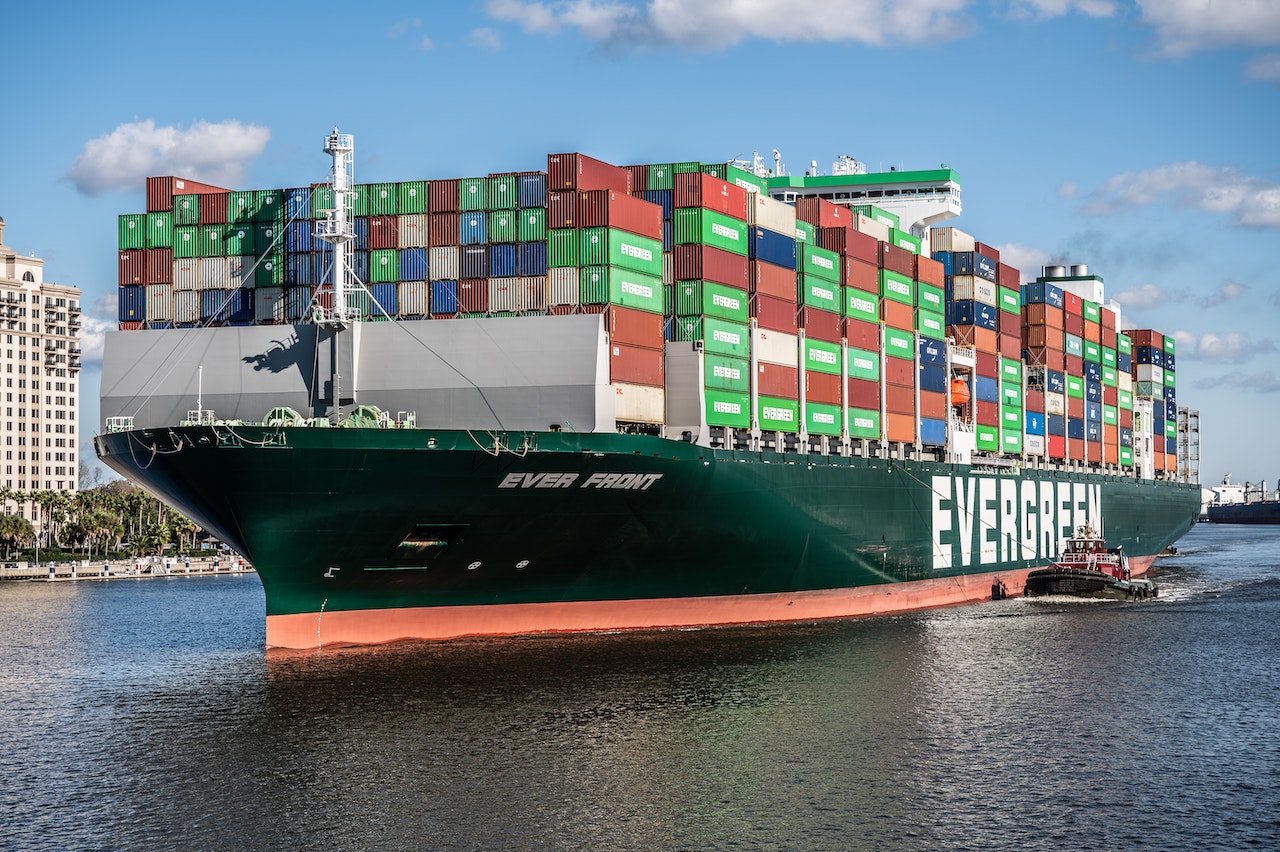Unveiling the Key Steps to Obtaining an Import-Export Permit

Having an import-export permit is crucial for businesses engaged in international trade. It serves as a legal document that allows them to legally import goods into their country or export goods to other countries. The importance of this permit cannot be overstated, as it ensures compliance with regulations and laws related to international trade.
Firstly, an import-export permit helps businesses establish credibility and authenticity in the global market. It demonstrates that they have met all necessary requirements and obtained the necessary approvals from relevant authorities. This can significantly boost trust and confidence among potential business partners, customers, and government agencies involved in international trade. Secondly, obtaining an import-export permit enables businesses to access a wider range of opportunities in the global marketplace. With this permit in hand, they gain access to various benefits such as tariff reductions, duty exemptions, and preferential trading agreements. Additionally, possessing this permit also allows businesses to participate in international trade fairs, exhibitions, and events that are essential for expanding their network and exploring new markets. Understanding the importance of an import-export permit can make a significant difference to any business involved in international trade. It not only provides legitimacy but also opens doors to numerous opportunities for growth and expansion in the global market. Therefore, entrepreneurs should prioritize obtaining this crucial document early on to ensure smooth operations and maximize their potential success internationally.
Researching import-export regulations and requirements
When venturing into the import-export business, it is essential to conduct thorough research on the regulations and requirements governing this industry. Understanding the import-export regulations of your target country is crucial to ensure smooth and legal operations. Each country has its own set of rules, which include tariffs, customs procedures, documentation requirements, and product restrictions. Failure to comply with these regulations can lead to significant penalties or even a complete halt in your business activities.
To begin researching import-export regulations and requirements, start by identifying the specific governmental agencies responsible for overseeing international trade in your target country. These agencies may include customs departments, trade ministries, or regulatory bodies. Once identified, visit their official websites or contact them directly to access information regarding import/export laws and policies. It is also advisable to seek assistance from local chambers of commerce or trade associations that specialize in assisting businesses with international trade matters. Keep in mind that import-export regulations are subject to change over time due to shifts in international relations or economic conditions. Therefore, it is crucial not just during the initial research phase but throughout your business operations as well to stay updated on any changes or updates in both your home country’s export laws and the importing country’s import requirements.
Identifying the type of permit needed

After conducting thorough research on the import-export industry and understanding its regulatory landscape, the next crucial step is to identify the type of permit needed for your specific business operations. This step requires careful consideration of several factors such as the nature of your goods, their country of origin, and their destination country. One common type of permit that many importers and exporters require is an Importer-Exporter Code (IEC) issued by the Directorate General of Foreign Trade (DGFT). This code acts as a unique identifier for businesses engaged in cross-border trade activities. However, it’s important to note that not all shipments may require an IEC. For instance, if you plan on importing or exporting items below a certain value threshold, you may be exempted from obtaining this code.
Another permit to be mindful of is a harmonized system code or commodity code. These codes categorize goods into specific product categories based on their attributes. They play a crucial role in determining the customs duties and taxes applicable to your products during import or export. Familiarizing yourself with these codes will substantially help in accurately completing customs documentation and ensuring smooth transactions.
Gathering necessary documentation and information
Now that you have determined the type of import-export permit you need and familiarized yourself with the regulations, it’s time to gather all the necessary documentation and information. This step is crucial as missing or incomplete paperwork can delay your application process. Firstly, you’ll need to provide proof of identity such as a valid passport or driver’s license. This is essential for verifying your identity and ensuring compliance with security measures. Additionally, you may be required to submit documents related to your business entity, such as registration certificates, tax identification numbers, and ownership proof.
You’ll need to gather information on the specific products or goods you plan to import or export. This includes descriptions of items, their intended use, quantity, weight/volume dimensions, country/origin details – basically any relevant details that demonstrate your understanding of what you’ll be dealing with. Including invoices for purchased goods can also help verify their value. Remember that each country has its own set of requirements regarding documentation and information needed for customs declaration purposes. Therefore, it’s important to thoroughly research and consult with experts if necessary in order to ensure complete compliance.
Submitting the application for an import-export permit
Once you have completed the necessary documentation and compiled all the required information, it is time to submit your application for an import-export permit. This step is critical in your journey to becoming a successful international trader. But what does this process entail? Let’s delve into the details. To ensure a smooth submission, it is important to carefully review your application form for any errors or missing information. Double-checking that all sections are filled out correctly can help prevent delays in processing your paperwork. Additionally, make sure that you have included all supporting documents requested by the relevant authorities. These can include copies of business registration certificates, tax identification numbers, and proof of financial stability such as bank statements or audited accounts.
It is also crucial to familiarize yourself with any specific requirements or regulations related to importing and exporting certain products or goods in your target market or country of interest. Different countries may have unique rules regarding certain commodities that you need to abide by when applying for a permit. Being aware of these regulations beforehand will not only help streamline your application process but also demonstrate your commitment to complying with local laws. Be prepared for potential follow-up inquiries from the authorities during the processing period. It is not uncommon for officials to request additional information or clarifications regarding your application. Promptly addressing their queries and providing accurate responses will speed up the approval process and enhance your chances of obtaining an import-export permit within a reasonable timeframe.
Paying fees and following up on the application
Once you have submitted your import-export permit application, it’s time to address the next crucial step: paying the necessary fees. While this may seem like a simple task, it is important not to overlook its significance. Paying the fees demonstrates your commitment and seriousness toward obtaining the permit. It also helps to fund the administrative processes involved in reviewing and processing applications.
After completing the payment process, be sure to follow up on your application regularly. This shows that you are proactive and eager for updates on its progress. Keep an eye on any communication from the issuing agency or department regarding additional requirements or documents needed for approval. By staying in touch with them, you signal that you are actively engaged in the process and ready to provide anything they might need. By promptly paying fees and following up on your import-export permit application, you display professionalism and dedication as a business owner. Remember, perseverance pays off when it comes to navigating bureaucratic procedures successfully.
The significance of obtaining an import-export permit

Obtaining an import-export permit is not just a bureaucratic formality; it is a significant step in ensuring the success of your international trade ventures. This permit grants you the legal authorization to engage in import and export activities, allowing you to navigate through complex regulations and compliance measures with ease. It opens doors to new markets, enables you to forge strategic partnerships with overseas suppliers or distributors, and provides access to a wider range of products – all vital ingredients for growth and profitability. Beyond its obvious legal benefits, an import-export permit can also elevate your business reputation. With this document in hand, you demonstrate credibility and professionalism as a legitimate player in the global market. A permit showcases your commitment to complying with regulations and safeguarding national interests. Such adherence fosters trust among potential partners or clients, leading to long-term relationships built on mutual respect and reliability.
Obtaining an import-export permit equips you with valuable knowledge of international trade laws that will steer your business toward sustained success. While the process itself may be time-consuming and tedious at times, it forces you to navigate through various regulatory frameworks that govern foreign commerce. As a result, you gain a comprehensive understanding of importing and exporting procedures like tariff classifications, customs valuation methods, and documentation requirements – essential knowledge for optimizing revenue and minimizing risks throughout your trading journey.



